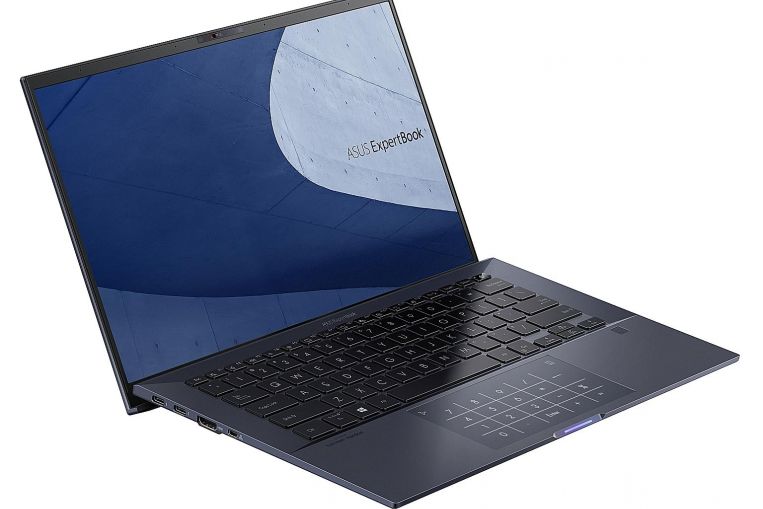The AMD-powered Asus ZenBook 14 (UM433DA) is the latest sign of AMD’s growing traction in notebooks.
The chipmaker was expected to hit a 20 per cent share of the notebook market by the first quarter of this year – up from 14 per cent in the third quarter of last year – according to Taiwanese IT publication DigiTimes in January.
AMD’s recent resurgence can be explained partially by Intel’s year-long CPU shortage last year.
Competitive pricing helps too. Our review set, for instance, is priced at $1,398, compared with $1,598 for its Intel equivalent (UX433FAC).
Both models share the same chassis design and have similar features. But the AMD version has a larger 1TB solid-state drive (SSD) compared with the 512GB SSD in the Intel variant.
AMD also deserves credit for closing the performance gap with Intel.
In the PCMark 10 benchmark, our review set scored 3,729. While I did not test its Intel-based equivalent, an LG gram notebook that uses the latest Intel Core i7-1065G7 processor scored 3,848 in the same benchmark.
Based on the breakdown of the test result, the Intel chip did slightly better for productivity workloads, while the AMD processor had the advantage for content creation.
In short, it is more or less a wash between the two notebooks. In daily use, you are unlikely to be able to distinguish between the performance of the two.
Specs aside, the ZenBook 14 is a solidly built 14-inch thin-and-light notebook with a unique feature – an LED-illuminated numeric keypad overlaid on the touchpad.
Dubbed NumberPad, this feature has been a staple of Asus ZenBooks for over a year now. The latest iteration is more responsive and less buggy than the original version. It is handy if you are crunching numbers.
FOR
• Good value for money
• Solid build quality
• Bright, near-bezel-less display
AGAINST
• Arrow and function keys are small
• Bland design
SPECS
PRICE: $1,398
PROCESSOR: AMD Ryzen 7 3700U (2.3GHz)
GRAPHICS: AMD Radeon RX Vega 10
RAM: 8GB DDR4
SCREEN SIZE: 14 inches, 1,920 x 1,080 pixels
CONNECTIVITY: USB 3.1 Type-C Gen 2, USB 3.1 Type-A Gen 2, USB 2.0, HDMI, microSD card reader, audio jack
BATTERY: 50 watt-hour
RATING
FEATURES: 4/5
DESIGN: 4/5
PERFORMANCE: 4.5/5
VALUE FOR MONEY: 4.5/5
BATTERY LIFE: 4/5
OVERALL: 4/5
The keyboard offers decent key travel and three degrees of brightness. But I found the directional arrow keys and the Function keys, which are also used to control key settings such as screen brightness and volume, too small for my liking.
I like how Asus has calibrated the hinge such that the lid can be opened easily with one hand. But I cannot say the same of the tired lid design, which, like most ZenBooks since the series’ debut in 2011, features concentric circles rippling outwards from the Asus logo.
Like most modern notebooks, the ZenBook’s 14-inch display is surrounded by ultra-slim bezels. Squashed in the top bezel is an infrared camera, which works accurately to recognise my face to log me into the notebook’s Windows 10 operating system.
The matte screen has good viewing angles and a standard 1,920 x 1,080-pixel resolution. It is also relatively bright, which is good for well-lit environments.
With an uptime of 6hr 25min in our usual video-loop battery test, the ZenBook offers decent battery life. I was slightly disappointed by this result though, given that many laptops can now hit the seven-hour mark.
Source: Read Full Article
